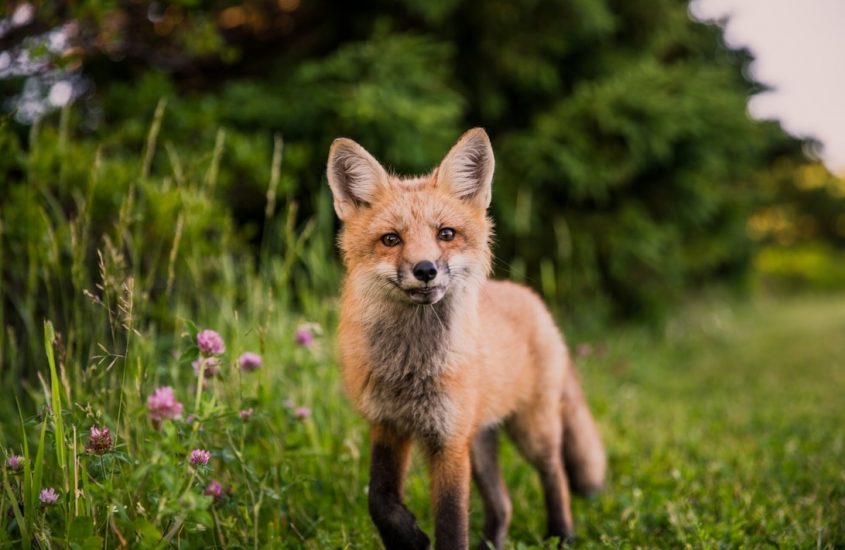How to Create a Sustainable Garden That Supports Local Wildlife

Gardens are so much more than just personal outdoor spaces. Collectively, they form a vast, vital network – potentially larger than a whole county here in the UK! Whether you have sprawling lawns or a tiny urban courtyard, your garden can become a crucial refuge for wildlife, especially as natural habitats face increasing pressure in 2025. I find it incredibly rewarding to see my own patch buzzing with life, and transforming your garden into a sustainable haven that supports local creatures is easier, and more beneficial, than you might think. It’s about making conscious choices that nurture biodiversity, creating a space that’s beautiful for you and bustling with life.
Why welcoming wildlife matters
Creating a wildlife-friendly garden isn’t just a nice thing to do; it’s becoming increasingly important. We’re seeing declines in many familiar species, from hedgehogs to house sparrows and starlings, partly due to habitat loss and fragmentation, as noted by conservation groups like the Devon Wildlife Trust. Our gardens, estimated at around 16 million in the UK, can act as vital stepping stones and sanctuaries within the landscape. Research from the British Trust for Ornithology (BTO) highlights this, showing that a significant percentage of some bird populations, like starlings (54%) and blackbirds (33%), already rely on built-up areas, including our gardens, for breeding. By gardening with wildlife in mind, we actively contribute to supporting these populations and boosting local biodiversity. A garden teeming with life tends to be a more resilient, balanced ecosystem. This often means fewer pest problems and less need for constant intervention, as you’re working with nature, not against it.
Planting for Wildlife and Biodiversity
Choosing the right plants is fundamental to creating a garden that truly supports local ecosystems. It’s about looking beyond just aesthetics and considering the ecological role each plant plays, providing food and shelter throughout the year.
Foundation Planting for Life
The plants you choose are the bedrock of a wildlife-friendly garden. Prioritising plants native to your specific region is often the best starting point. These are the species that local insects, birds, and other animals have evolved alongside and rely on for food and shelter. They are naturally adapted to the local climate and soil, often requiring less water and care once established. While resources like the California Native Plant Society (CNPS) focus on their region, the principle of choosing locally native plants applies everywhere. Check resources from your local Wildlife Trust for specific recommendations. Think beyond individual specimens and consider creating ‘plant communities’ (grouping plants with similar needs, like they’d grow together naturally). This ‘layered approach’, using plants of different heights like trees, shrubs, perennials, and groundcover, provides diverse habitats and resources throughout the year, mimicking natural environments like woodlands or meadows on a smaller scale. Using native plants helps recreate a sense of place and directly supports the unique biodiversity of your area.
Variety and year-round appeal
Variety is truly the spice of life in a wildlife garden. Aim for a mix of plants that offer food sources like nectar, pollen, seeds, and berries at different times of the year. Early spring flowers are crucial for emerging queen bumblebees, while late-blooming varieties like asters or sedum sustain insects into autumn. Don’t forget winter interest – berries on holly or ivy provide vital food for birds when other sources are scarce, and seed heads left standing on plants like teasels or grasses offer both sustenance and shelter for insects and birds. Consider plants specifically known to attract beneficial insects; Garden Organic suggests sowing poached egg plants (Limnanthes douglasii), Calendula, or Phacelia early in the season as they are insect magnets. Even common ‘weeds’ like nettles can be incredibly valuable, acting as the primary food source for the caterpillars of beautiful butterflies like Red Admirals, Peacocks, and Small Tortoiseshells. While native is often best, some non-native plants like Buddleja (butterfly bush) or lavender can also provide valuable resources, particularly nectar. Just be sure to avoid known invasive species that can escape the garden and harm local ecosystems – guidance on identifying problematic plants, like that offered by Canada’s Invasive Species Centre, is crucial for gardeners everywhere.
Providing Habitats Shelter Water and Structure
A truly wildlife-friendly garden offers more than just food; it provides places for creatures to shelter, breed, hibernate, and find water. Adding structural elements and diverse features is key.
Water features wood piles and natural cover
Beyond plants, the physical structure of your garden provides essential shelter and resources. Perhaps the single most valuable feature you can add is a pond or water source. Even a small container pond or a shallow dish with pebbles (so insects don’t drown) provides drinking water for birds and mammals, and habitat for amphibians like frogs and newts, and aquatic invertebrates like dragonflies. As the Mendip Hills AONB guide suggests, if safety with young children is a concern, a ‘bog garden’ – a permanently damp, marshy area providing similar benefits to a pond without open water – is a great alternative. Another simple yet effective habitat is a log pile tucked away in a quiet, shady corner. Decaying wood supports a huge range of fungi and invertebrates like beetles, which in turn feed larger animals such as hedgehogs and birds. Don’t underestimate the value of ‘leaving things be’ – piles of leaves left under hedges, hollow stems on perennials left standing over winter, and undisturbed corners offer crucial hibernation and nesting spots for insects and other small creatures. Embracing a little ‘untidiness’ is often beneficial.
Building homes for wildlife
You can supplement natural habitats with artificial shelters, especially where natural sites are scarce. Bird boxes of different sizes cater to different species (place them ideally facing between north and east, away from strong sunlight and prevailing winds). Bat boxes placed high on a wall or mature tree can provide roosting sites. Purpose-built hedgehog houses offer a safe place for hibernation. ‘Bee hotels’ (structures with drilled holes of various sizes from 2-10mm or bundles of bamboo canes) attract solitary bees. The Royal Horticultural Society (RHS) showcases various successful habitat creations in their gardens, like ‘amphibian houses’ at RHS Hyde Hall made from old roof tiles creating a cool, damp shelter near a pond, or ‘bee posts’ made from recycled fence posts with holes drilled in, proving you don’t need expensive kit. Living boundaries like native hedges or climbers on fences, as championed by the Devon Wildlife Trust, offer far more for wildlife than solid fences, providing food, shelter, and safe corridors for animals to move through the landscape. Even small features matter; London Wildlife Trust’s Centre for Wildlife Gardening, transformed from a depot site, demonstrates the power of mini-habitats like small wildflower meadows, ‘stag beetle sanctuaries’ (typically created using partially buried logs/wood to provide habitat for larvae), and specific patches of bare soil for ‘ground-nesting bees’ (bees that dig nests in bare, undisturbed soil patches).
Sustainable Gardening Practices
Wildlife gardening and sustainable gardening go hand-in-hand. By minimising our environmental impact and working with natural processes, we create healthier gardens for ourselves and the creatures we share them with.
Nurturing your garden naturally
A crucial step is ditching pesticides and herbicides. These chemicals rarely target just one pest and can harm non-target species, including beneficial insects like bees and ladybirds, amphibians (whose permeable skin makes them very sensitive), and the birds or hedgehogs that might eat poisoned slugs or insects. Explore organic methods instead – try ‘companion planting’ (like planting marigolds near tomatoes to deter certain pests, or French beans near potatoes), encourage natural predators by providing habitat for them (ladybirds feast on aphids!), use physical barriers, or simply accept a little ‘damage’ as part of a healthy, living ecosystem. Remember, those holes in leaves might mean a caterpillar is feeding, which will soon become vital food for a baby bird! Learning to love a slightly ‘messier’ garden, embracing ecological principles like those discussed by guides like In Our Nature, reduces workload and benefits wildlife immensely by leaving overwintering sites and natural food sources intact. Allow plants to self-seed and leave leaf litter in place where possible.
Conserving resources water and soil health
Water conservation is vital, especially with changing climate patterns. Installing a water butt (or several!) to collect rainwater, as suggested by the Woodland Trust, provides free, soft water that’s perfect for plants and reduces reliance on treated tap water. Water efficiently using a watering can directed at the roots, preferably in the morning or evening to reduce evaporation, rather than a sprinkler which can be wasteful. Consider using ‘greywater’ (wastewater from baths, showers, and sinks – but avoid using it on edible plants if harsh soaps or bleach are involved) for watering ornamental plants. Improving your soil health is also key. Composting your garden waste (like grass clippings and prunings) and uncooked kitchen waste (like vegetable peelings) creates fantastic, free soil conditioner, reducing landfill waste and the need for bought compost. Always look for peat-free compost options to protect precious peat bog habitats, a point emphasized by organisations like the National Trust for Scotland. Exploring ‘no-dig gardening methods’ (which involve adding organic matter like compost to the soil surface instead of digging it in) helps preserve soil structure, moisture, and beneficial fungal networks, and can even reduce weeds over time. Reducing the size of traditional, resource-intensive lawns, perhaps replacing areas with a wildflower meadow mix or more diverse planting as suggested by projects focusing on designing for biodiversity, also cuts down significantly on mowing, watering, and feeding.
Your garden A thriving patchwork of life
Creating a sustainable garden for wildlife is an ongoing journey, not a one-off task. It’s about observing what visits your garden, learning what thrives, and adapting your approach. It involves a shift in perspective, finding beauty not just in perfect blooms but in the buzz of bees exploring flowers, the rustle in the undergrowth signalling a foraging hedgehog, and even the nibbled leaf that shows your garden is providing food for others. Every garden, no matter the size, has the potential to contribute to a larger network of nature-friendly spaces, creating vital corridors and refuges. By implementing some of these ideas, you can transform your patch into a richer, more dynamic environment. The rewards are immense – not just the satisfaction of seeing wildlife thrive up close, but the deeper connection you forge with the natural world right outside your door. If you feel you need more tailored advice, look for local initiatives; for instance, the Hampshire and Isle of Wight Wildlife Trust has volunteer ‘Wilder Garden Champions’ offering free guidance specific to local conditions, and many other Wildlife Trusts offer similar support. Ultimately, it’s about cultivating a space where both people and nature can flourish side-by-side.

